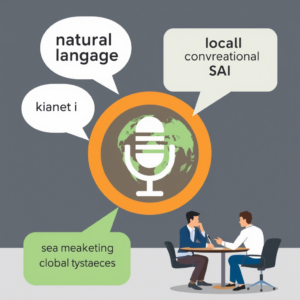In today’s fast-paced digital world, content is king—but only when it’s consistent, strategic, and valuable. Whether you’re running a blog, managing a business social media account, or leading a marketing team, having a solid content calendar can make or break your success. But here’s the truth: not all content calendars are created equal.
So, what separates a content calendar that delivers real results from one that just looks good on paper?
This article will walk you through everything you need to know about building a content calendar that actually works. We’ll explore how to plan effectively, choose the right tools, maintain consistency, adapt to changes, and measure success.
By the end of this guide, you’ll have a clear roadmap for creating a content calendar that drives engagement, builds trust, and grows your audience—without burning out in the process.
Let’s dive in.
1. Why You Need a Strategic Content Calendar (And Not Just a Schedule)
Before jumping into templates or tools, it’s important to understand why a strategic content calendar matters more than simply scheduling posts.
A content calendar isn’t just about marking dates on a calendar; it’s about aligning your content with your goals, your audience’s needs, and the broader marketing landscape. It helps you stay organized, ensures consistency, and prevents the dreaded “what do I post today?” panic.
But many people make the mistake of treating their content calendar like a to-do list—posting whenever they feel inspired or reacting to trends without a plan. While spontaneity has its place, relying solely on it often leads to inconsistent messaging, missed opportunities, and scattered efforts.
A strategic content calendar, on the other hand:
- Keeps your brand voice consistent
- Ensures you’re covering key topics and themes
- Helps you prepare for seasonal events or campaigns
- Allows for better collaboration across teams
- Enables you to track performance and optimize over time
Example: A fashion brand might plan content around seasonal trends, holidays, and product launches months in advance. This way, they’re not scrambling to create last-minute posts during busy periods—they’re already ahead of the curve.
Ultimately, a well-thought-out content calendar gives you control, clarity, and consistency—three ingredients that lead to long-term success.
2. Choosing the Right Tools to Build Your Content Calendar
Once you understand why you need a content calendar, the next step is choosing the right tools to build and manage it.
There’s no one-size-fits-all solution, but there are several popular options depending on your needs, team size, and budget:
Google Sheets or Excel
Great for small teams or solo creators who want full control and customization. You can easily track topics, publish dates, status updates, and even performance metrics.
Trello or Asana
Ideal for teams that prefer visual workflows. These platforms allow you to move content ideas through stages—from brainstorming to published—with clear deadlines and responsibilities.
Notion
A powerful all-in-one workspace that combines note-taking, task management, and database features. Perfect if you want to keep your editorial calendar, content briefs, and analytics in one place.
Dedicated Content Calendars (CoSchedule, Planoly, Later)
These tools are specifically designed for content planning. They integrate with social media platforms, offer drag-and-drop interfaces, and provide analytics dashboards.
Pro Tip: Start simple. If you’re new to content planning, begin with a basic spreadsheet or free tool. As your needs grow, you can upgrade to more advanced solutions.
Remember, the best tool is the one you’ll actually use consistently. Don’t get caught up in finding the “perfect” platform—focus on what works for your workflow.
3. Planning Your Content Themes and Topics Strategically
Now that you have your tools in place, it’s time to think about what you’ll be posting.
A content calendar without a clear theme or strategy behind it is like a ship without a compass—it may move, but it won’t go anywhere meaningful.
Here’s how to plan your content strategically:
Define Your Core Themes
Start by identifying 3–5 core themes that reflect your brand values, audience interests, and business objectives. For example, a health coach might focus on nutrition tips, workout routines, mental wellness, client success stories, and industry news.
Map Out Key Dates and Campaigns
Mark important dates such as holidays, product launches, company milestones, or awareness months. These serve as anchors for your content and help ensure you don’t miss major opportunities.
Create a Mix of Content Types
Don’t rely on just one type of post. Mix things up with educational content, promotional posts, behind-the-scenes glimpses, user-generated content, and interactive content like polls or Q&As.
Example:
- Monday: Motivation Monday (inspirational quotes or stories)
- Wednesday: Wellness Wednesday (tips on healthy living)
- Friday: Feature Friday (highlighting clients or products)
Having a mix keeps your audience engaged and prevents your feed from becoming monotonous.
Align With Your Audience’s Journey
Think about where your audience is in their journey—awareness, consideration, or decision—and tailor your content accordingly. This ensures you’re delivering value at every stage.
By planning your themes and topics in advance, you create a framework that guides your content creation and keeps your messaging aligned with your goals.
4. Maintaining Consistency Without Burning Out
One of the biggest challenges content creators face is maintaining consistency—especially when life gets busy or motivation dips.
The key to staying consistent without burning out lies in planning ahead, batching tasks, and setting realistic expectations.
Batch Your Work
Instead of writing one post per week, try batching your content. Set aside a few hours each month to brainstorm, write, and schedule multiple pieces of content at once. This not only saves time but also reduces stress.
Repurpose and Recycle
You don’t always have to start from scratch. Turn one successful blog post into a video, infographic, podcast episode, or social media series. This maximizes the value of your content while saving you time.
Use Templates and Systems
Create reusable templates for common content types—like email newsletters, social media captions, or blog outlines. Having a system in place speeds up the creation process and ensures quality stays high.
Know When to Take Breaks
Consistency doesn’t mean posting every single day. Sometimes, taking a short break can actually boost creativity and prevent burnout. Just make sure to communicate with your audience so they know when you’ll be back.
Real-Life Example: Many successful bloggers post 2–3 times a week rather than daily. This allows them to produce higher-quality content while maintaining a sustainable pace.
Remember, consistency is about showing up regularly—not perfectly. Focus on progress, not perfection.
5. Measuring Success and Adapting Over Time
Creating a content calendar is just the beginning. To truly drive results, you need to monitor performance and adjust your approach based on data.
Here’s how to measure success and keep improving:
Track Key Metrics
Depending on your goals, track metrics like:
- Engagement rate (likes, comments, shares)
- Click-through rate (CTR)
- Website traffic from social media
- Conversion rates (sign-ups, purchases, downloads)
- Reach and impressions
Use built-in analytics tools on platforms like Instagram, Facebook, or Google Analytics to gather insights.
Review and Reflect Monthly
Set aside time each month to review your content calendar. Ask yourself:
- Which posts performed best? Why?
- Were there any gaps in coverage?
- Did we meet our publishing goals?
- What could we improve next month?
Be Flexible and Adaptive
While planning is crucial, don’t be afraid to pivot when needed. If a particular topic resonates with your audience, double down on it. If something isn’t working, try a different approach.
Example: During the pandemic, many businesses shifted their content focus from office-related topics to remote work tips and mental health resources. Those who adapted quickly saw increased engagement and loyalty.
Test and Optimize
Run A/B tests on headlines, posting times, visuals, and calls-to-action. Small tweaks can lead to big improvements in performance.
Building a content calendar that drives results requires ongoing attention and refinement. Stay curious, stay data-driven, and never stop learning.
Final Thoughts: Your Content Calendar Is a Living Document
Creating a content calendar that actually drives results isn’t about perfection—it’s about strategy, consistency, and adaptability. It’s a living document that evolves with your brand, your audience, and the ever-changing digital landscape.
Whether you’re a solo creator or part of a large marketing team, investing time in building a thoughtful content calendar pays off in spades. It helps you stay organized, engage your audience, and achieve your business goals—all while reducing stress and avoiding burnout.
So take a deep breath, grab your favorite planning tool, and start mapping out your content future. The results will speak for themselves.
What’s Next?
Now that you’ve learned how to build a content calendar that drives real results, it’s time to put theory into practice. Start by defining your core themes, choosing a tool that fits your style, and mapping out your first month of content.
If you found this guide helpful, share it with fellow creators or leave a comment below—we’d love to hear how you’re using your content calendar to grow your brand!
And remember: the best content calendar is the one that works for you. So don’t be afraid to experiment, iterate, and find your own rhythm.
Frequently Asked Questions
Q: How far in advance should I plan my content calendar?
A: It depends on your capacity and industry, but most creators plan 1–3 months ahead. Some plan quarterly or even six months in advance for major campaigns.
Q: Can I use the same content calendar for multiple platforms?
A: Yes, but tailor the format and tone to fit each platform. What works on LinkedIn might not resonate on TikTok.
Q: What if I run out of ideas?
A: Keep a running list of content ideas throughout the year. Use tools like AnswerThePublic or Google Trends to find inspiration based on what your audience is searching for.
Q: How do I handle unexpected events or breaking news in my content calendar?
A: Leave some flexibility in your calendar for timely content. You can also create a section for “spontaneous” or “news-based” posts.
Ready to Get Started?
Download our free Content Calendar Template to kickstart your planning process. Whether you’re using Google Sheets, Excel, or Notion, this template includes space for themes, topics, publishing dates, and performance notes.
Happy planning!




